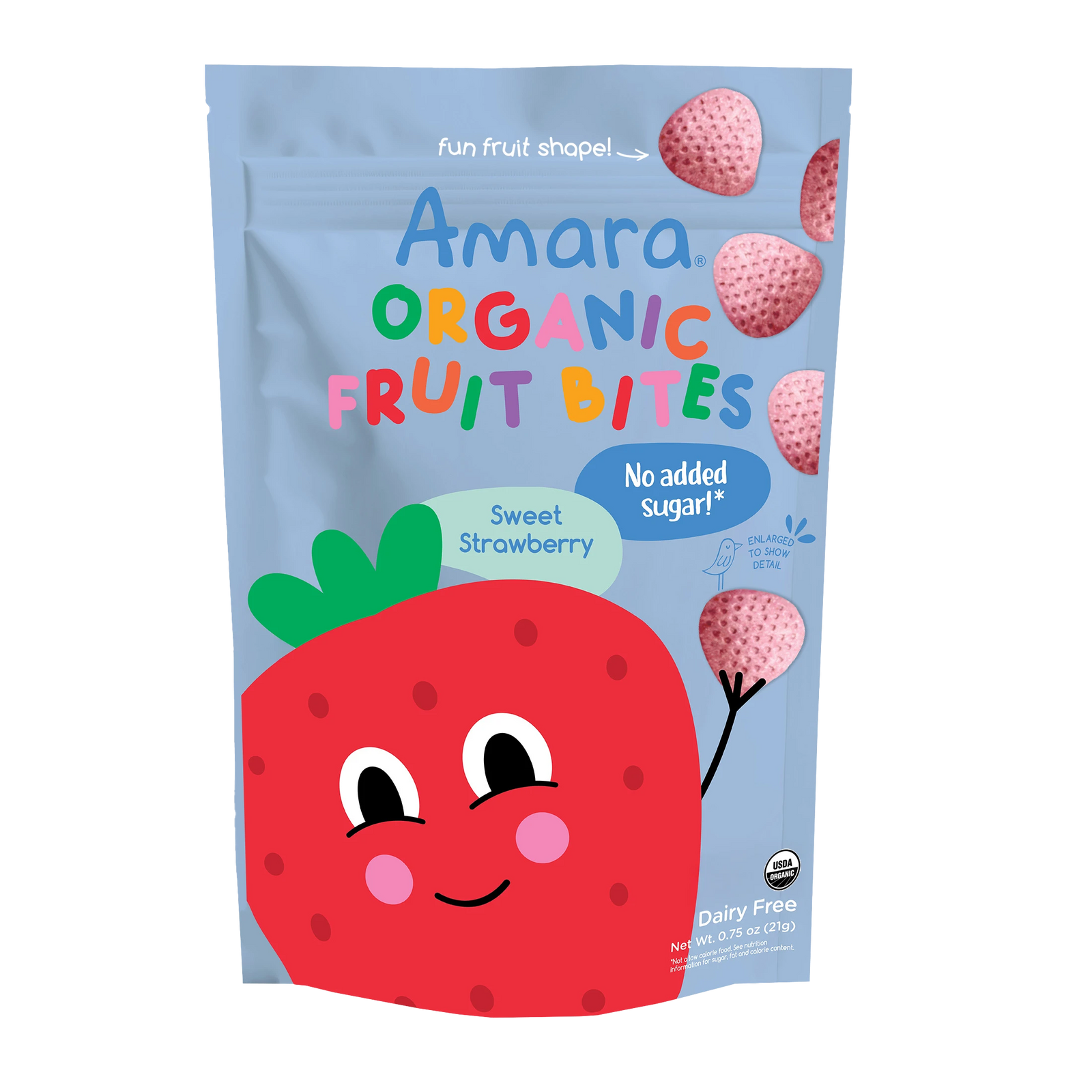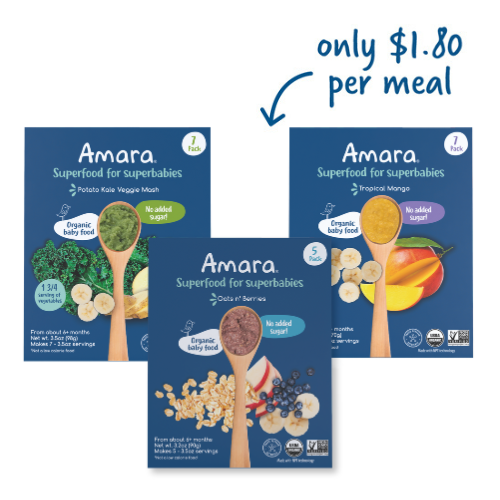
By Michael Goran and Emily Ventura, Authors of the new Book “Sugarproof: The Hidden Dangers of Sugar that are Putting Your Child’s Health at Risk and WHAT YOU CAN DO”. Details on this book can be found at www.sugarproofkids.com
Why Is Sugar So Problematic for Babies' and Kids’ Development?
How long has it been since you had one of your favorite candies from childhood? Pixy Stix? Sweetarts? Smarties? If you’ve had them recently, you probably wonder how you ever enjoyed dumping straight sugar into your mouth. But you probably did love it when you were a kid. Here’s why: kids have a greater built-in preference for sweet tastes compared to adults. This is the case for both real sugars and low-calorie sweeteners. Given the choice, kids will typically select the sweeter option, and then want more of it.
This innate love of sweet taste is probably an evolutionary adaption that was designed so that infants will like breast milk, which is sweet. As they start to wean, this preference helps them avoid bitter tasting foods that could harm them. Like toxic berries from the forest floor. Once helpful for survival, this preference for sweetness is now problematic in our modern, overly sweet food environment. We are now raising infants in an environment where 85 percent of infants consume added sugars on any given day because nearly every product designed for their age group is sweetened. Food companies know infants prefer sweet tastes, so they also sweeten infant formula and products intended for post-formula/post-weaning. A recent analysis of 240 of the most popular baby and toddler foods in the US showed that 100 percent of baby food desserts, 92 percent of fruit snacks, 86 percent of cereal bars and 57 percent of teething biscuits and cookies contained more than 20 percent of their calories from sugar. Almost 40 percent of all products listed sugar (or some form of sugar) as the first or second ingredient, even those branded as healthy choices. These companies know that a preference for sugar is formed early and if they develop this preference in babies and young children, they’ll create a reliable market of sugar eaters.
On top of the biologically built-in preference for sugar in young children, there’s learned behavior as well. Early exposure to more sweetness (from either real sugars or LCS) can shape preferences for an even stronger sweet taste for life. Think of this like compound interest, in which money grows exponentially. In this situation, the preference for sweetness will become even stronger during development and continue to evolve between generations. We even know that if a pregnant mother consumes sugar or sweetness in any form,her unborn baby will develop an even greater than usual preference for more sweetness. Take this innate desire for sweet tastes and couple it with the idea that the brain registers sweet tastes with a desire to eat more, and we have a situation where children are predisposed to eat – and overeat – sugar. The good news is that even though a sweet taste preference can be shaped in early life, we can also work towards re-setting it to a lower, more moderate level through diet modification.
While more people are becoming aware of the dangers of too much sugar and realize the need to reduce consumption, it’s not commonly known just how bad sugar can be for growing bodies. While you might be familiar with the visible behavioral effects of sugar that you’ve seen in kids when they’ve had too much, you may not appreciate the hidden dangers of what’s going on “under the skin”. You don’t see the damage sugar is doing to your child’s brain, other developing organs, and body. Perhaps the most significant trigger of the perfect sugar storm is the unique physiology of kids and how sugar, once it is consumed, has such a negative impact on their growth and development.
New research shows that too much sugar during these growth periods puts kids at risk at any age whether they are still developing in the womb, weaning from breast milk towards solid foods, having a big growth spurt during the elementary years, or going through adolescence. Kids go through many critical periods of growth when cells and organs are especially sensitive to the adverse effects of different kinds of sugar and too much of it. Most parents are aware that sugar is linked to their children’s fluctuating energy level, hyperactivity, mood disorders, weight gain, acne, and tooth decay—and they are absolutely right. But too much sugar also affects unexpected territory, with disturbing and possibly lasting effects on learning, memory, addictive tendencies, taste preference, appetite regulation, self-soothing, gut health, liver function, diabetes risk, lung health, heart disease, and metabolism.
Another significant issue that explains how sugars can disrupt growth involves the idea that developing cells can be sensitive to even very low levels of sugar, especially fructose. All cells derive from stem cells. Stem cells function as a sort of master cell, a cell that hasn’t yet formed a special function. As stem cells develop into specialized cells, they can be sensitive to being reprogrammed based on certain nutritional factors. For example, exposure to fructose can alter the fate of developing cells, making them more likely to become fat cells. Because many LCS mimic sugar so effectively, they have also been shown to re-program developing cells to become fat cells. Because babies in utero, infants, and children are growing, they are more likely to have a higher amount of these developing cells, and these cells can be programmed by exposure to the wrong type of sugars. Once these cells are programmed, they’re programmed for a child’s entire life. In other words, in some situations, even small amounts of the wrong type of sugar can irreversibly alter the fate of a developing cell.
The process of building a mature brain begins in utero and continues through the teenage years. As we discuss in more detail in Sugarproof, exposure to too many sugars during periods of development can alter the brain and have irreversible and lasting effects on behavior, food preferences and ability to regulate appetite. In addition, studies show that even just watching commercials for sweet foods and drinks activate the brain’s reward regions, making kids physiologically more vulnerable to product marketing. It’s difficult for most adults to resist sugar marketing, but children, whose executive functions are still developing, are even more vulnerable to their effects. In simple terms, this means that the behaviors and traits of children can be shaped irreversibly through exposures and experiences during these critical periods of brain development.
Where Do We Go From Here?
We understand that sugar is a major part of our food culture and because of its pervasiveness, reducing it might seem daunting. There is also a general belief that kids can pretty much eat what they want as long as they stay active. And even though we have made connections between sugar and numerous health issues and how this evolves in children, we also recognize that there other factors in play, not just sugar.
However, the unfortunate reality is that too much sugar is a common element of poor diet and diet-related disease risk. It’s a bit likethe old story about the frog placed in the pot of water. If the frog is placed in the water before it is brought to a boil, it slowly acclimates to the temperature and doesn’t realize it is being boiled alive until it is too late. The same analogy applies to sugar in our environment. We have gradually accustomed ourselves to more and more sugar and a sweeter and sweeter diet over time and our kids’ bodies are suffering from slow and silent damage. That damage may go unnoticed until they find themselves at the pediatrician for liver damage or having heart problems later in life – all traced back to sugar.
In our book Sugarproof, we help guide you to raise kids who are protected from these harms. When your child is very young, you can help by select foods for weaning that are free from added sugar. We give tips for creating a healthy food environment at home and include dozens of recipes that are free from added sugar and full of nutritious ingredients. We also help guide you to raise kids who can start to make their own healthy decisions related to sugar and food, finding their own internal motivation to do so. The goal is to help kids learn to self-regulate so they will become healthy eaters for life.
Method:
1. Preheat the oven to 350°F.
2. Wash the cabbage and pat dry.
3. For regular red or green cabbage, remove any damaged outer leaves and quarter it lengthwise. Trim out the inner core with a single diagonal cut. Turn each quarter onto its side so it doesn’t roll, and slice it into ribbons. You can make them as fine/thick as you want.
4. For savoy cabbage, peel off the thicker outer leaves, stack them up in stacks of about 4 leaves, and cut alongside either side of the ribs. Discard the ribs (or feed them to some rabbits), and slice the remaining parts into ribbons. Once you get down to the more tender middle section of the cabbage, treat it as you would a red or regular green cabbage, following step 2 above (i.e., cut it into quarters, slice out the core, and slice into ribbons). Thin ribbons are best for savoy cabbage because it can be tougher than other types.
5. Spread the ribbons out onto 2 rimmed baking sheets, large Pyrex dishes, or any other type of roasting pans. You can usually fit about 1/2 cabbage on each baking sheet. (If you want them to be extra crispy, only use about 1/4 cabbage per baking sheet and make a single layer that will brown more evenly.)
6. Drizzle approximately 3 tablespoons of oil over each pan and toss it with the cabbage using your hands or tongs to distribute the oil.
7. Pop them in the oven and roast for 30 to 45 minutes (depending on how crispy you like them), stirring every 15 minutes.
8. Sprinkle with sea salt and enjoy!
NUTRITION FACTS PER SERVING: Calories 90 Total Fat 7g Protein 1g Total Carbohydrate 8g Dietary Fiber 2g Total Sugars 4g Added Sugars 0g
Find more low-sugar recipes on the Sugarproof Kids BLOG.
How is Amara Different?
Unfortunately, baby food companies still use repeated high heat to essentially boil down fruit and vegetables. This not only leeches out valuable vitamins and minerals, but it also concentrates natural sugars. That's why even if the label says only "banana" in the ingredient list, it will have much higher sugar grams than our 100% Banana at Amara. Our banana has not been boiled down, so its natural sugars remain intact, leaving Amara with half the sugar as leading brands. You can see the difference in sugar grams but also in this graph of how our bodies react differently to the glucose in the two products.
Discover the Amara difference. 100% organic, plant-based baby purees ready in seconds. Simply add breast milk (water or formula work too!) and serve. Check out our best-selling Introduction to Solids Variety Pack.










Leave A Comment